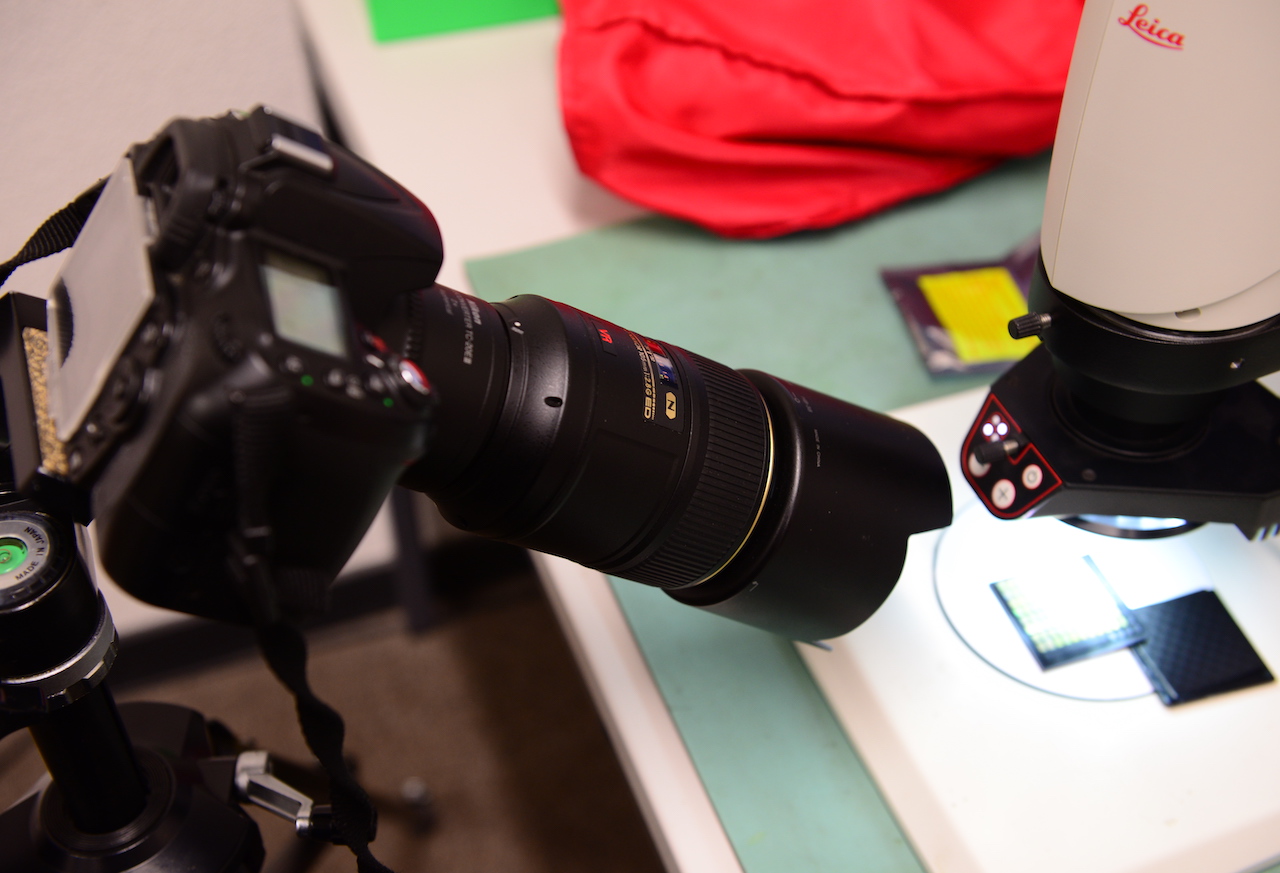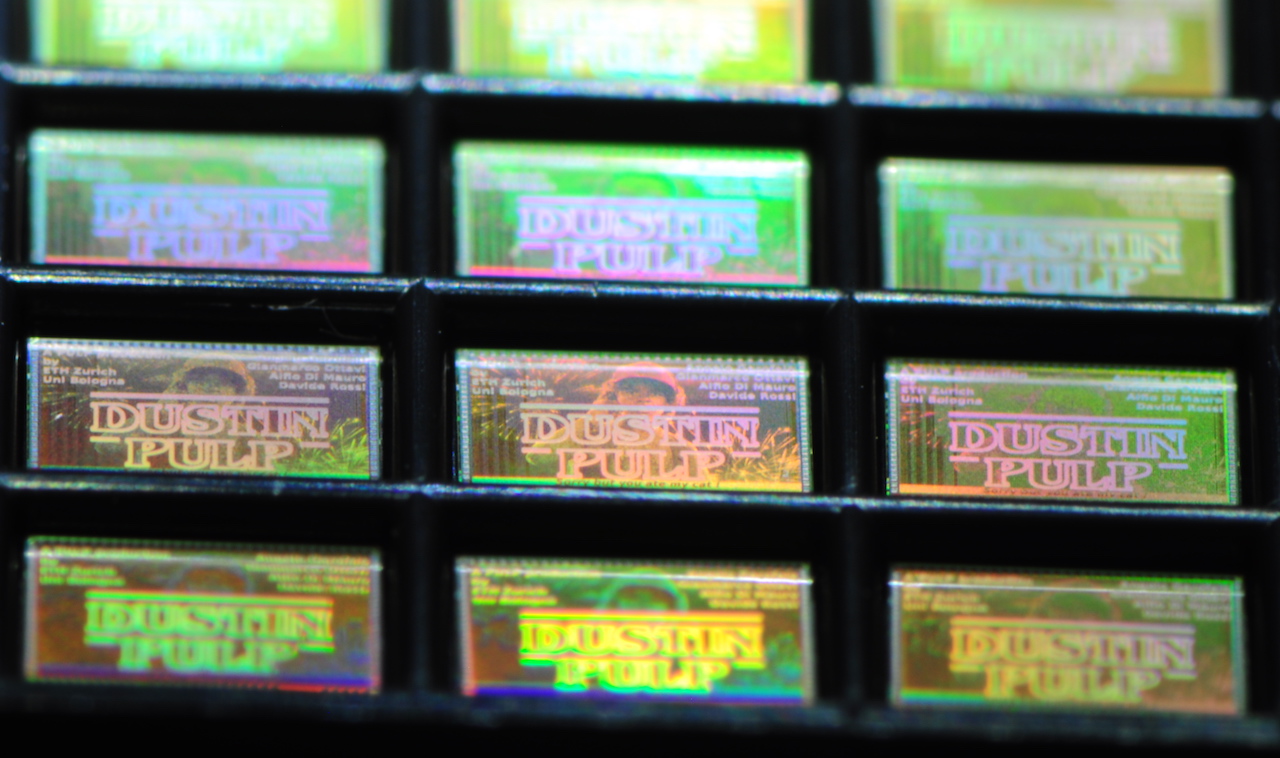Macros: Difference between revisions
mNo edit summary |
No edit summary |
||
| Line 8: | Line 8: | ||
<div class="col-xs-12 col-md-6 col-lg-6"> | <div class="col-xs-12 col-md-6 col-lg-6"> | ||
=== Why/how use a macro=== | === Why/how use a macro=== | ||
What sets a macro lens apart is the [[reproduction ratio]] of the lens. It allows objects that are comparable in size to the image sensor (36mm x 24mm for [[full frame]], which is the size of an SD card) to be captured filling the entire frame (for a 1:1 [[reproduction ratio]]). In practical terms this means that [[minimum focus distance]] is much closer than a ''regular'' lens. As an example, a [[Nikon 200]] macro lens can focus from about 50cm, whereas a regular 200mm lens would require about 2 meters. | |||
This is why, for macro photography, [[auto focus]], vibration reduction techniques and fast lenses are really not that important. But you will see a lot of lenses with | Note that many pictures that you think needed a macro, [[You do not need a macro|are not shot using macro lenses]]. In fact there are very few specific cases (for example photographing coins or post stamps for catalogs) that will need a macro. Commonly cited motives like flowers (they are usually bigger) or insects (you usually can not come that close) do not always require a macro. | ||
It is also interesting that when you use a macro lens you usually will: | |||
* Use smaller apertures as when you are close, the [[depth of field]] will be very small, so you will have to use much smaller apertures (f/20 and larger). | |||
* Due to the distance and small aperture, the [[exposure]] will be longer and therefore you will need a tripod | |||
* As you are very close, fixing the [[Focus]] manually will be more practical. | |||
This is why, for macro photography, [[auto focus]], vibration reduction techniques and fast lenses with large [[aperture]]s are really not that important. But you will see a lot of lenses with these capabilities because... | |||
===You can use macro lenses for other purposes === | ===You can use macro lenses for other purposes === | ||
| Line 71: | Line 75: | ||
<gallery mode=slideshow> | <gallery mode=slideshow> | ||
File:macropicture.jpg|A microchip with a [[Nikon 105]] using a [[TC 20E]] on an [[APS-C]] camera giving it an effective [[focal length]] of 300mm. | File:macropicture.jpg|A microchip with a [[Nikon 105]] using a [[TC 20E]] on an [[APS-C]] camera giving it an effective [[focal length]] of 300mm. | ||
File:sutton.jpg|Mask of Sutton Hoo in British Museum, London. This is handheld and through the display case. | File:sutton.jpg|Mask of Sutton Hoo in British Museum, London. This is handheld and through the display case. One interesting bit about [[taking pictures in museums]] is that if the object is behind a glass case, you will want to come closer to the glass to reduce the reflections. At this time you will be quite close to the object itself, so being able to focus close is a plus. In most cases a regular [[zoom]] would be able to get a similar [[reproduction ratio]] but the lens would be further away from the camera which makes it harder to hide the reflections. In this particular case, note that the mask here will fit an average person so is about 20-25cm high, so the reproduction ratio is more like 0.2x which most practical lenses would manage easily. | ||
File:Nikon200setup.jpg|A typical [[macro]] setup, this time using the [[Nikon 200]], for the picture in [[:File:Chip nikon200.jpg]] | File:Nikon200setup.jpg|A typical [[macro]] setup, this time using the [[Nikon 200]], for the picture in [[:File:Chip nikon200.jpg]] | ||
File:D700.jpg|Most equipment pictures on this page is made using a [[Nikon 105]]. Here is the [[Nikon D700]], it also has the other manual focus [[Nikon 105]] mounted. | File:D700.jpg|Most equipment pictures on this page is made using a [[Nikon 105]]. Here is the [[Nikon D700]], it also has the other manual focus [[Nikon 105]] mounted. | ||
Revision as of 22:14, 9 December 2021
Lenses that lets you come closer
Macros are designed so that the minimum focus distance is lower than a lens of comparable focal length. This allows you to take pictures of small things, insects, flowers and detailed close-ups.
Why/how use a macro
What sets a macro lens apart is the reproduction ratio of the lens. It allows objects that are comparable in size to the image sensor (36mm x 24mm for full frame, which is the size of an SD card) to be captured filling the entire frame (for a 1:1 reproduction ratio). In practical terms this means that minimum focus distance is much closer than a regular lens. As an example, a Nikon 200 macro lens can focus from about 50cm, whereas a regular 200mm lens would require about 2 meters.
Note that many pictures that you think needed a macro, are not shot using macro lenses. In fact there are very few specific cases (for example photographing coins or post stamps for catalogs) that will need a macro. Commonly cited motives like flowers (they are usually bigger) or insects (you usually can not come that close) do not always require a macro.
It is also interesting that when you use a macro lens you usually will:
- Use smaller apertures as when you are close, the depth of field will be very small, so you will have to use much smaller apertures (f/20 and larger).
- Due to the distance and small aperture, the exposure will be longer and therefore you will need a tripod
- As you are very close, fixing the Focus manually will be more practical.
This is why, for macro photography, auto focus, vibration reduction techniques and fast lenses with large apertures are really not that important. But you will see a lot of lenses with these capabilities because...
You can use macro lenses for other purposes
Most macro lenses are prime lenses (there are some zooms) and they can be used regularly for anything else as well. They do not have any shortcomings when you use them regularly. Auto focus, vibration reduction etc, are more useful when they are used for other purposes, not so much for macro photography. They are excellent landscape and portrait lenses.
While very few people actually use the macro capability of these lenses, macro lenses are popular, even second hand their prices are higher than other lenses (of similar focal length and aperture).
Getting enough light
One thing to keep in mind is that the minimum focus distance is the distance between the camera sensor and the subject, and not the end of the lens. This is sometimes an issue for smaller focal length macro lenses (60mm or less), for maximum effect you need to come very close, and the camera/lens will start blocking the light. Of course there are tricks for this (flash around your lens for example), but this is why, most of the time, you would want to use 100mm or longer focal length lenses that allow you to have a bit of distance between the camera and your subject so that you can get the light in properly.
Overview
For macro lenses, the focal length does not really tell you how much larger the picture will be, as the minimum focus distance also scales. You usually talk about reproduction ratio which is how large the image will appear on your sensor.
| Lens | Minimum focus distance | Weight | Notes |
|---|---|---|---|
| Nikon 35-105 | cm | 500g | Zoom |
| Nikon 105 | 32cm | 750g | Many models |
| Sigma 150 | 38cm | 1'100g | |
| Nikon 200 | 50cm | 1'200g |
Here I am trying to take a picture of a few small microchips. There is a Nikon 105 macro lens together with a TC 20E teleconverter on a Nikon D90.
And here is the result
The microchips here (Dustin) are 4mm by 2.5mm large and you can read about these chips more here.
Macro lenses on this wiki
Gallery
These pages are for Amateur Photographers and not really for seasoned photographers and professionals. I have no affiliation or commercial interest with any brand/make. I write from my own experience. I ended up using mainly Nikon, so I am more familiar with this brand than others. See price for notes on pricing as well as photography related links.










